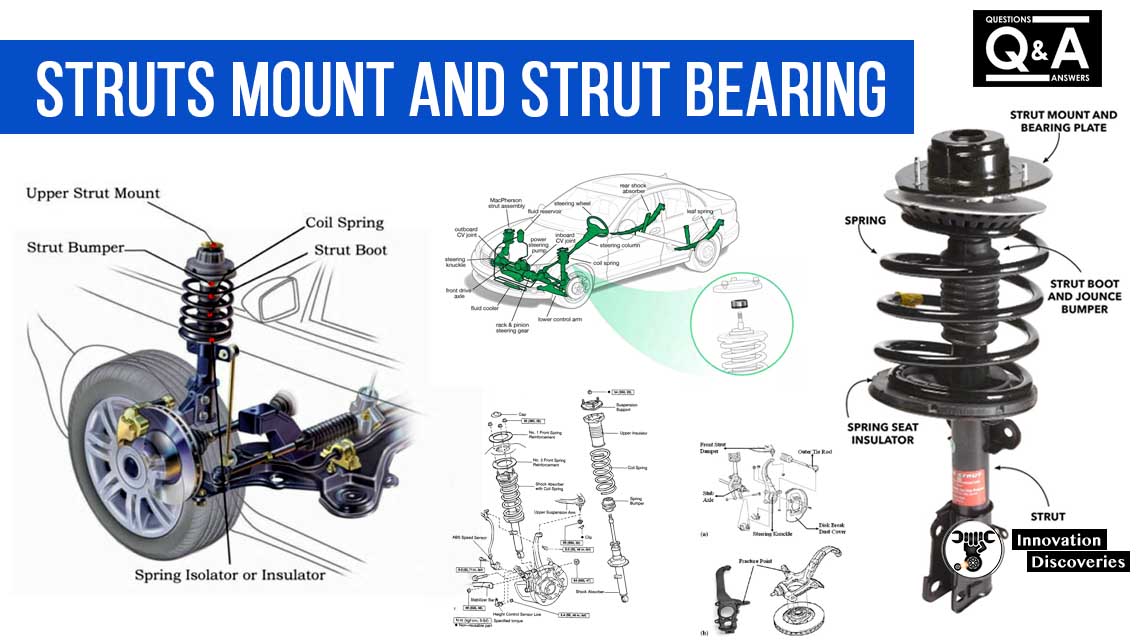
How do struts work?
Struts are a part of your vehicle’s suspension system and provide you with a comfortable ride.
Struts contain several different key suspension parts.
Car Struts contain the coil spring, spring seats, shock absorbers, strut bearing, and the steering knuckle.
Car Struts have two main jobs:
- first, they support the vehicle’s weight and provide structural support,
- And second, they dampen the spring’s movements as they react to the road surface.
Read More
- SUSPENSION INSPECTION – QUESTIONS AND ANSWERS
- SUSPENSION ELASTIC ELEMENTS
- HOW AIR SUSPENSION SYSTEMS WORK
- 5 SUSPENSION MODS YOU SHOULD NEVER DO TO YOUR CAR
Struts provide structural support by connecting the upper strut bearing to the lower ball joint. This allows the strut to move as the tire is turned.
Your vehicle’s suspension is in charge of keeping your tires in contact with the road surface at all times.
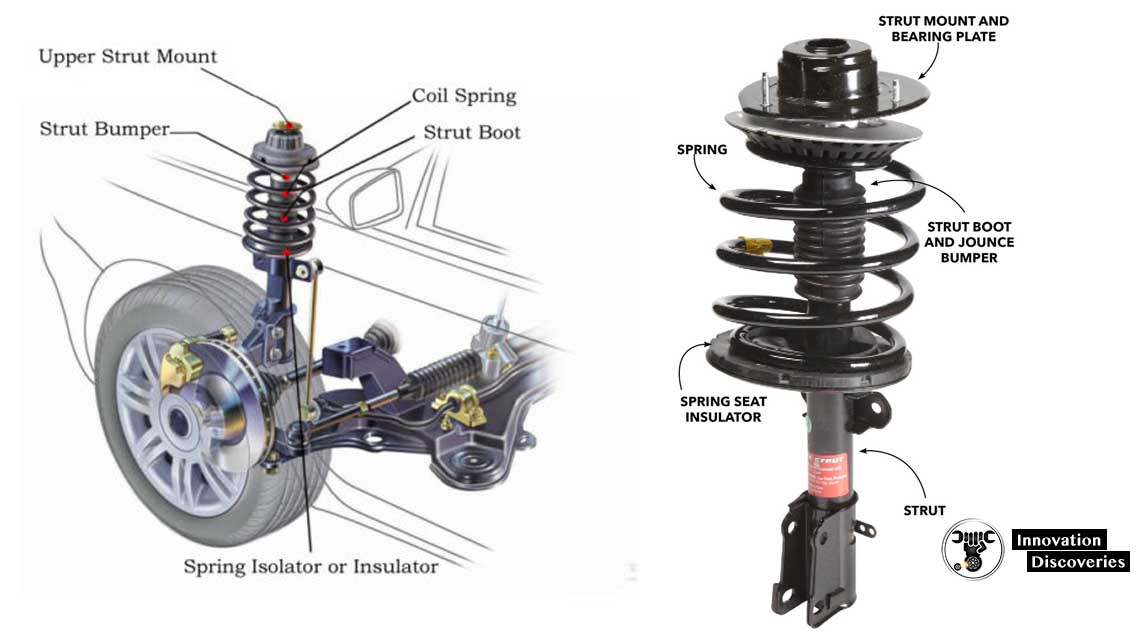
Struts are a dampening device for your vehicle.
This means that they “dampen” or absorb the excess bouncing of your vehicle’s suspension as your vehicle passes over uneven road surfaces.
Your vehicle’s springs will allow the tire to move up or down to stay in contact with the road; your vehicle’s shock absorbers dampen the excess movement of the shocks.
Read More
- ENGINE MOUNT: HOW IT WORKS, PROBLEMS, SYMPTOMS, REPLACEMENT
- AIMING HEADLIGHTS: HOW TO GET THE PROPER ALIGNMENT
- CAN YOU DRIVE A CAR WITH BAD MOTOR MOUNT?
Why do you need to replace struts?
Struts play an integral role in your vehicle’s handling and braking.
They keep your tires in constant contact with the road.
Without struts, including springs and shock absorbers, your car would continue to bounce every time you hit a pothole or a bump in the road.
Worn struts allow your car to bounce excessively from side-to-side or front-to-back, which may remove your tires from the road.
Worn struts also increase the distance it takes for your vehicle to stop and increases the wear on your tires.
Basically, worn struts can make braking and corner very dangerous.
Read More
- KNOWING THE DIFFERENCE BETWEEN CAR TIRE ROTATION VS ALIGNMENT
- GEAR RATIO AND TIRE SIZE CHART
- HOW TO CHECK TIRE AIR PRESSURE
- ALL ABOUT TIRES, WHAT IS THE MEANING OF NUMBERS ON THE TYRE? WHAT IS INSIDE THE TYRE?
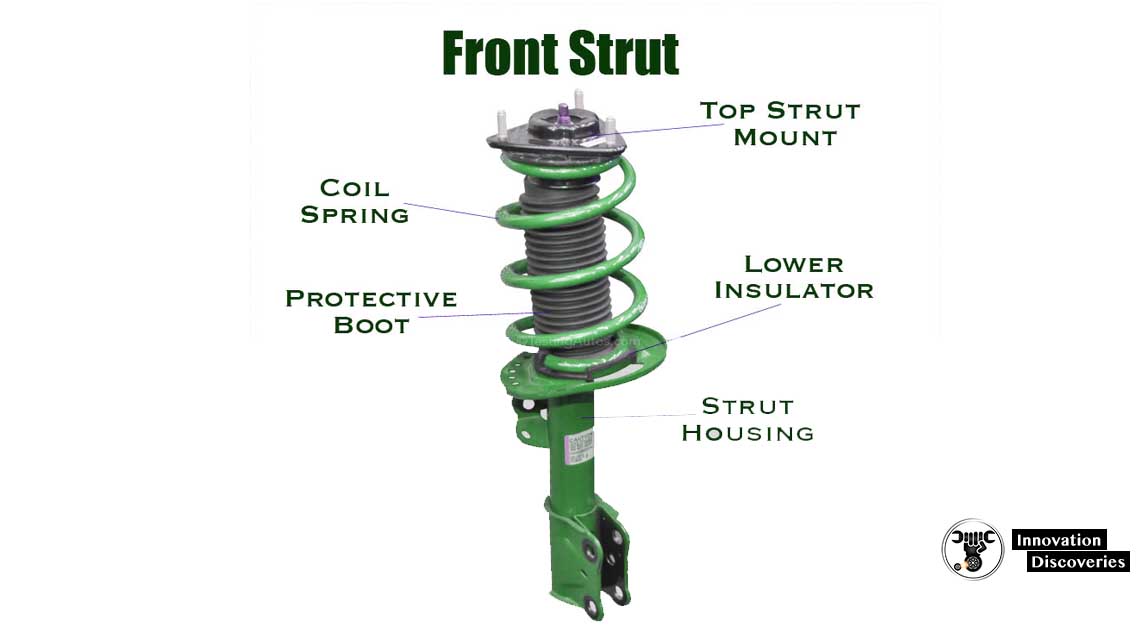
When do you need to replace struts?
Leaking shocks are an obvious sign that your struts need to be replaced.
If your vehicle is bouncing or swaying excessively, you should have your vehicle’s suspension checked.
A good way to check if your vehicle is bouncing excessively is to drive over a familiar road and see if there is more bouncing than usual.
You can also perform the bounce test.
The bounce test requires you to bounce each corner of your vehicle a few times, and after you let go, the vehicle should bounce only once and then settle.
If your vehicle settles after one bounce, then your shocks and struts are good.
If your vehicle continues to bounce, your shocks and struts may be worn and should be checked.
Bottoming out and nose-dives are also good signs of worn struts.
Experts say you should have your struts checked once a year or every 12,000 miles.

Strut Bearing
On many vehicles with strut-type suspension designs, the front struts (which include the springs and shock absorbers) are mounted with bearings or bearing plates that serve as the upper pivot points for the steering.
The bearings can wear out from long-term use, corrosion, impact or collision damage, and other factors.
When they do, they often make knocking or clunking noises over bumps or in turns, or the steering becomes stiff or snaps back toward centre when the driver lets go of the steering wheel.
Bad strut bearings can also cause alignment issues and uneven tire wear.
Many mechanics recommend that strut bearings be replaced whenever struts are replaced so worn bearings don’t affect suspension or steering performance.
Read More
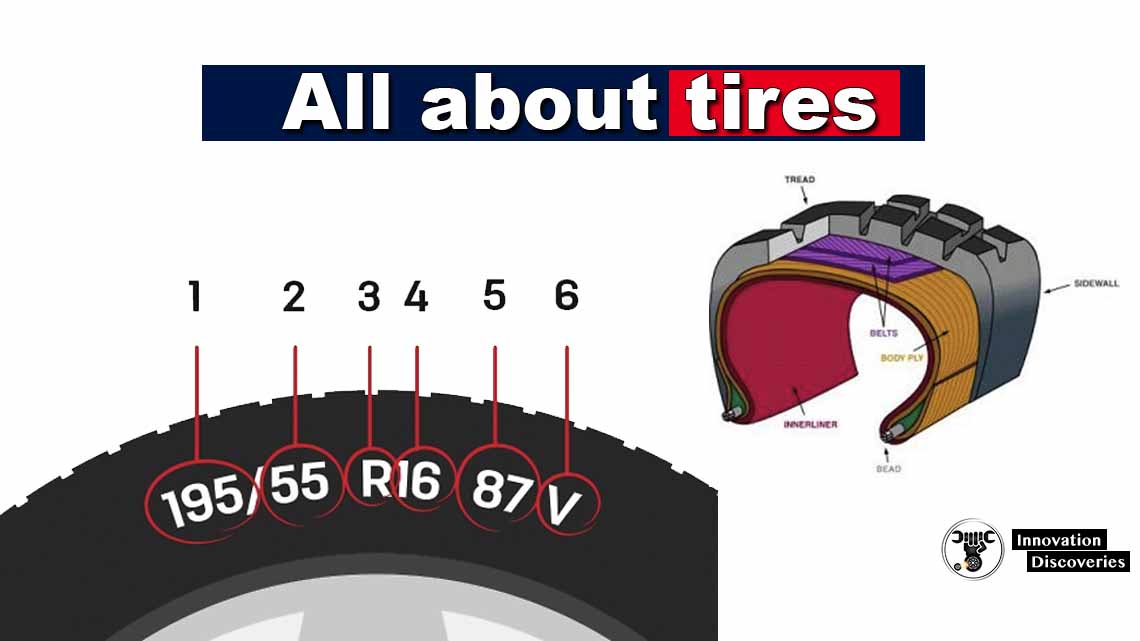
- HOW TO TELL WHEN IT’S TIME FOR A CAR TIRE ALIGNMENT
- HOW TO RESET TIRE PRESSURE SENSOR: A STEP-BY-STEP GUIDE
Some replacement parts come as a complete assembly with struts, springs, bearing plates and mounting hardware.
Also, strut assemblies should be replaced in pairs, not just one side at a time, and the vehicle should also get a wheel alignment after the struts and/or bearing plates are replaced.
One advantage of buying a complete strut assembly instead of individual parts is that with the complete kit, removing and installing the strut assembly doesn’t require a spring compressor, a tool that can cause serious injury when not used properly.
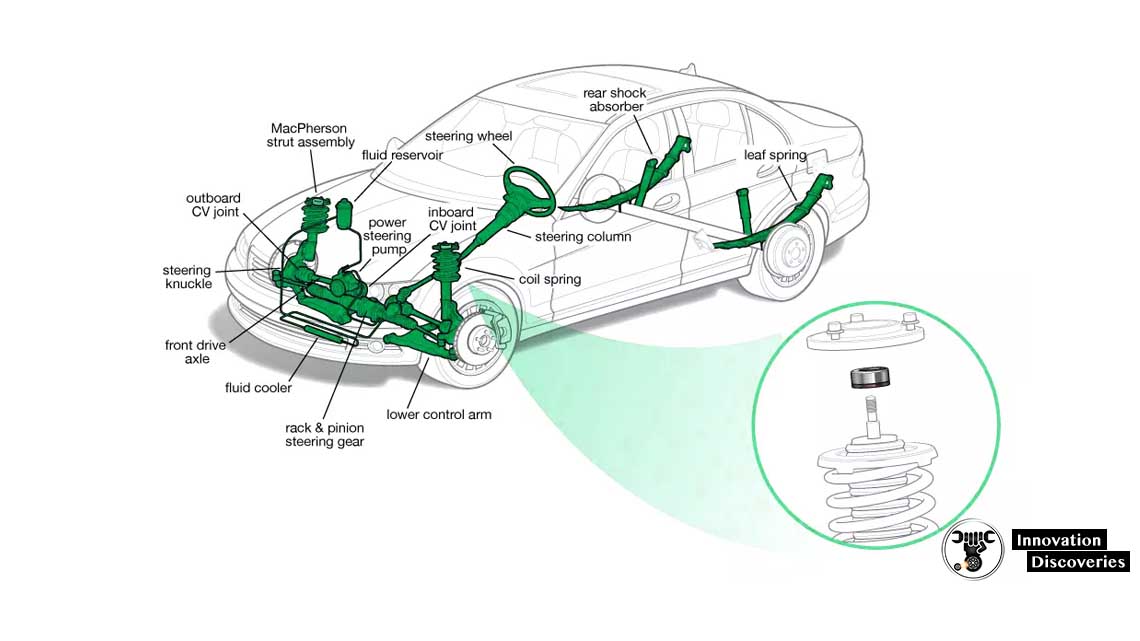
Also, read
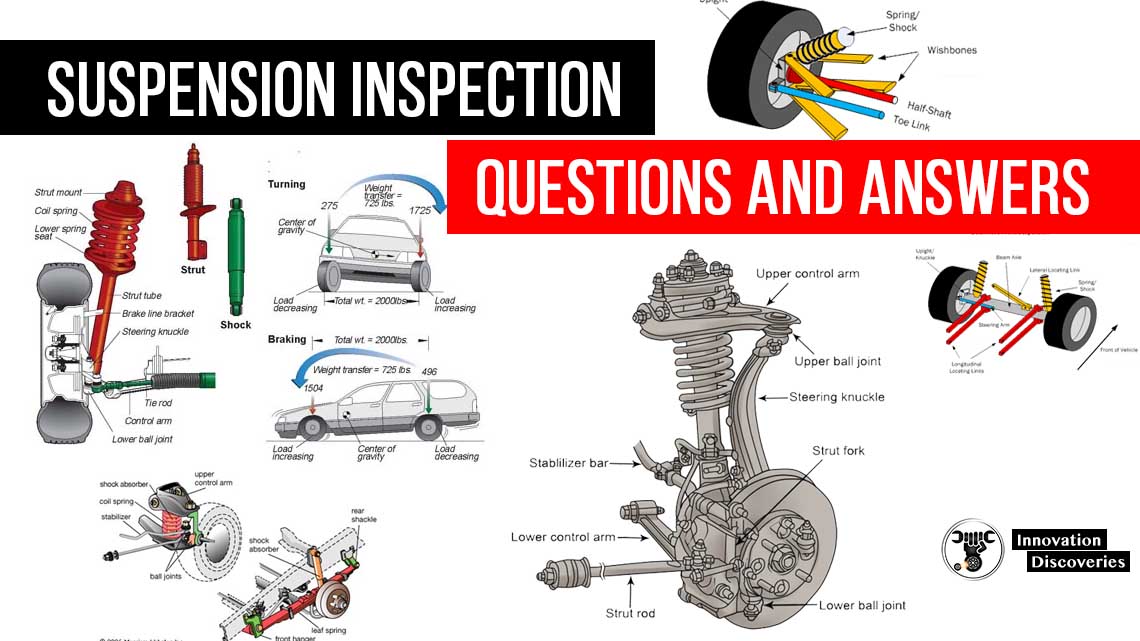
Visit Forum
Visit Our Friendly Website


One Comment